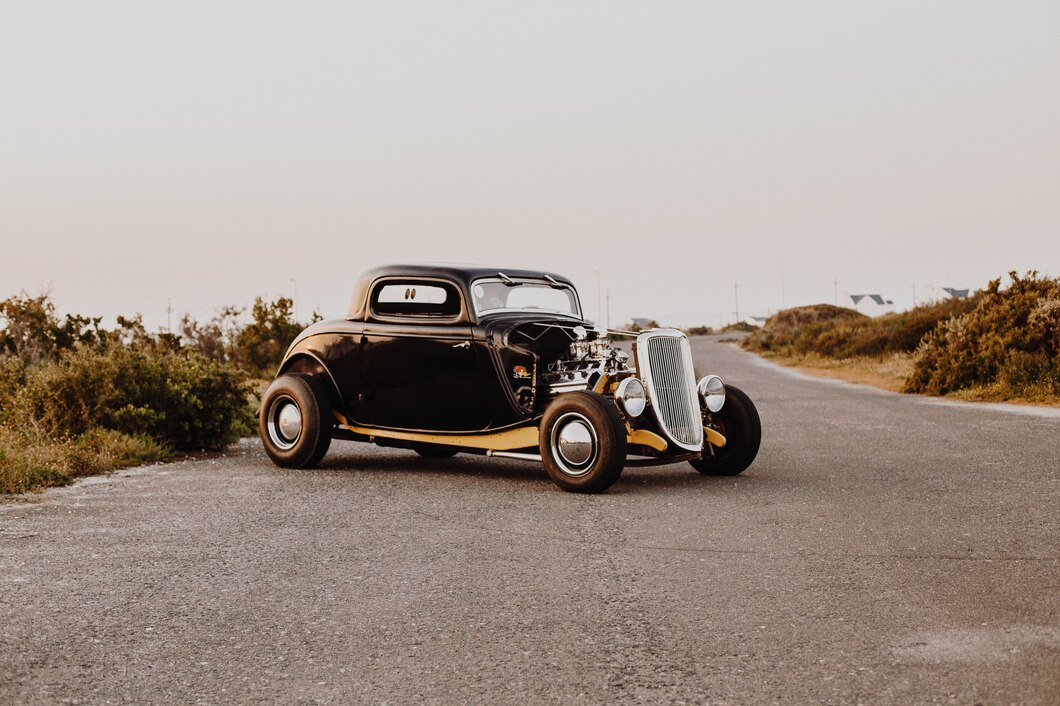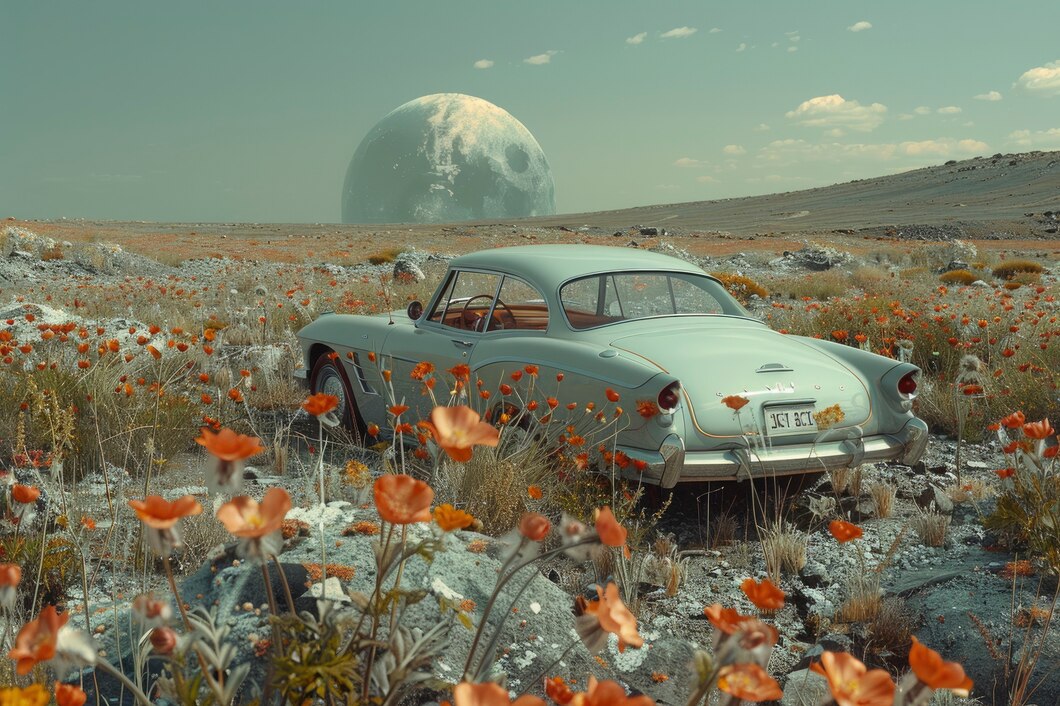Introduction
Luxury classic cars are more than just vehicles; they are rolling pieces of art that showcase human craftsmanship, engineering prowess, and timeless elegance. These automobiles have captivated car enthusiasts and collectors for decades, embodying the perfect blend of prestige and power. From the opulent interiors to the powerful engines, classic luxury cars represent the golden age of automotive history. These automobiles have made a lasting impression on the automotive industry, whether it be through the enticing appeal of a Rolls-Royce from the 1950s or the timeless sophistication of a vintage Bentley. Their legacy continues to inspire modern automobile design while maintaining their status as prized collector’s items.

The Birth of Luxury Automobiles
Luxury automobiles date back to the early 20th century when cars were more than just a mode of transportation; they were symbols of status and wealth. Rolls-Royce, Bugatti, and Packard saw an opportunity to create vehicles that exuded luxury when the auto industry was still in its infancy. These automobiles are distinguished from their mainstream counterparts by their handcrafted interiors, intricate detailing, and cutting-edge technology for their time. The roaring 1920s saw the emergence of brands that would go on to become household names in the luxury car segment.
Affluent consumers would order bespoke automobiles that were tailored to their specific preferences during this time period, putting the emphasis on masterpieces. Coachbuilders played a crucial role in shaping the aesthetics of these masterpieces, crafting bodies that were as elegant as they were aerodynamic. The introduction of models like the Rolls-Royce Phantom and the Bugatti Type 57 cemented the idea that luxury cars were not just about performance but also about unparalleled craftsmanship.
The Golden Age of Classic Luxury Cars
The 1930s to the 1950s are often referred to as the golden age of luxury automobiles. This period saw the rise of some of the most iconic and sought-after models in automotive history. Brands such as Mercedes-Benz, Cadillac, Bentley, and Aston Martin set new benchmarks for quality, design, and innovation.
The Mercedes-Benz 540K, introduced in the late 1930s, was a prime example of how luxury and performance could coexist in a single automobile. Its supercharged engine, long hood, and exquisitely designed interior made it a favorite among the elite. Meanwhile, in the United States, Cadillac was pioneering V16 engines, which provided unmatched power and smooth performance.
Post-World War II, the 1950s ushered in a new era of classic luxury cars with technological advancements and improved styling. The Jaguar XK120 became the epitome of British engineering, while the Rolls-Royce Silver Cloud set new standards for refinement. These cars weren’t just for the wealthy; they were aspirational symbols of success and sophistication.
Design and Craftsmanship: A Work of Art
The level of craftsmanship used to create classic luxury cars sets them apart from modern automobiles. Unlike today’s mass-produced automobiles, classic luxury cars were often handcrafted, making each model unique. The interiors featured fine materials such as hand-stitched leather, real wood veneers, and polished metal accents. These design elements weren’t just for show; they reflected the meticulous attention to detail that luxury automakers prided themselves on.
Externally, classic luxury cars boasted sweeping lines, elegant curves, and iconic grilles that made them instantly recognizable. On the road, a Duesenberg from the 1930s or a Rolls-Royce from the 1960s commanded respect and attention. Many of these designs have stood the test of time, influencing the aesthetics of modern luxury vehicles.
The Role of Performance in Classic Luxury Cars
Luxury cars weren’t just about looks; they were also designed to offer an unparalleled driving experience. The powerful engines under their long hoods were meticulously engineered to deliver smooth yet potent performance. Early luxury cars featured massive displacement engines, often V8 or V12, designed to offer effortless acceleration and cruising comfort.
The 1960s saw the rise of high-performance luxury cars that combined speed with sophistication. Brands like Ferrari, Maserati, and Aston Martin introduced grand tourers that could effortlessly travel long distances at high speeds while ensuring supreme comfort. The Aston Martin DB5, famously associated with James Bond, exemplified this combination of elegance and raw power.
These cars were built to last, with robust engines and high-quality components that ensured longevity. Today, well-maintained classic luxury cars still deliver impressive performance, making them highly desirable among collectors and enthusiasts.
The Cultural Impact of Classic Luxury Cars
Popular culture has been significantly influenced by classic luxury automobiles. From Hollywood movies to royal motorcades, these vehicles have been symbols of status and prestige for decades. The sight of a Rolls-Royce pulling up to a red carpet event or a Jaguar E-Type roaring down the highway evokes a sense of timeless sophistication.
In cinema, luxury cars have become iconic props that define characters and their personalities. Think of the Lincoln Continental in The Godfather or the Bentley Mark VI in Casino Royale. These automobiles are more than just vehicles; they are extensions of the personalities of the drivers. Beyond entertainment, classic luxury cars have been associated with royalty and world leaders. Rolls-Royces and Bentleys, the pinnacle of automobile opulence, have been the custom-built vehicles of many official state vehicles.
Collecting and Preserving Classic Luxury Cars
Owning a classic luxury car is more than just possessing a vehicle; it is about preserving history. Car collectors around the world dedicate their time and resources to maintaining and restoring these automobiles to their original glory. The process of restoring a vintage luxury car requires expertise, patience, and a deep appreciation for craftsmanship.
Classic car auctions regularly see rare models fetching millions of dollars, demonstrating the high demand for well-preserved luxury vehicles. Events such as the Pebble Beach Concours d’Elegance celebrate these timeless machines, bringing together collectors and enthusiasts from across the globe.
For many, classic luxury cars are an investment. Unlike modern cars that depreciate over time, well-maintained vintage luxury cars often appreciate in value. Limited production numbers and historical significance contribute to their growing worth, making them highly coveted assets in the automotive world.
The Influence of Classic Luxury Cars on Modern Vehicles
Modern automobile design continues to be influenced by the legacy of classic luxury automobiles. Many contemporary luxury brands pay homage to their heritage by incorporating vintage styling cues into their latest models. Rolls-Royce, for example, maintains the essence of its classic designs while integrating modern technology and performance enhancements.
Electric and hybrid luxury cars are also taking inspiration from their classic predecessors, ensuring that the elegance and prestige of vintage models live on in an environmentally conscious era. The Bentley Mulsanne and the latest Mercedes-Maybach are perfect examples of how manufacturers blend traditional luxury with cutting-edge innovation.

Conclusion
Classic luxury cars are more than just automobiles; they are masterpieces on wheels. Their blend of beauty, performance, and cultural significance ensures that they remain timeless symbols of prestige and power. Whether it’s the breathtaking elegance of a Rolls-Royce Silver Ghost or the raw performance of a Ferrari 250 GT, these cars have left an everlasting impact on the automotive industry.
Their influence continues to shape modern luxury vehicles, and their legacy is preserved by collectors and enthusiasts who recognize their unparalleled craftsmanship. The beauty and grandeur of classic luxury cars will always hold a special place in the hearts of car enthusiasts as the world moves toward new automotive technologies. They are, and always will be, masterpieces that tell the story of an era when automobiles were not just about getting from one place to another but about making a statement of style, class, and engineering excellence.

